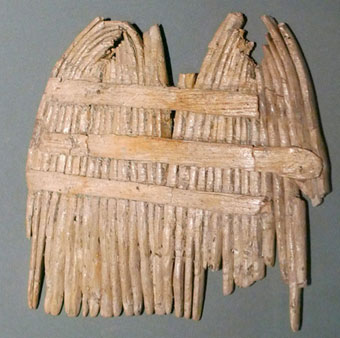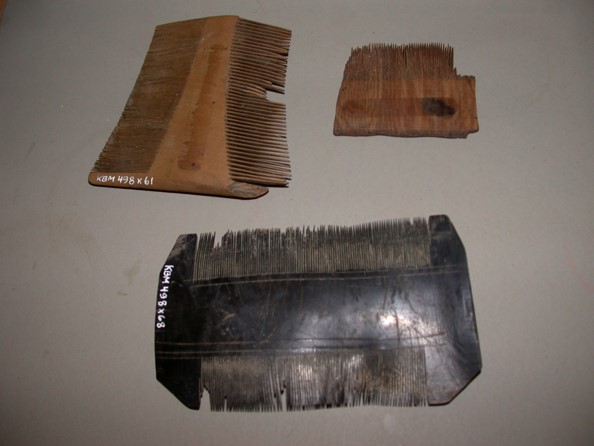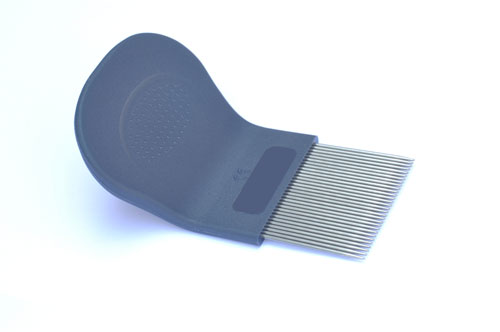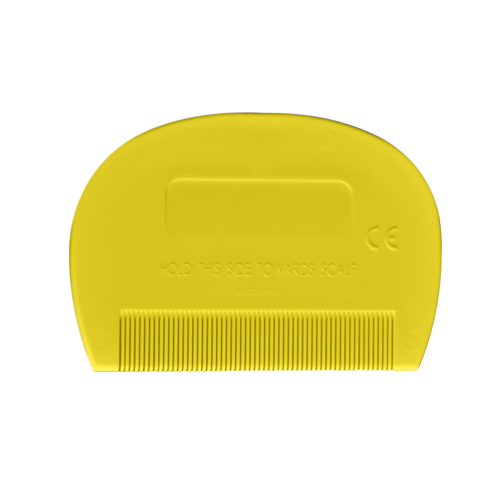The History of the Fine Tooth Comb and Combing for Head Lice
Combing has been a means of removing head lice for centuries. The Fine-Tooth comb dates as early as the Natufian period (9,500 – 12,500 BC) and its design has changed very little over the millennia. In earliest times, combs were made of ivory and bone.
Today a head lice comb is not just a head lice comb. Unfortunately you will find them in many poor qualities where the teeth are not made for catching even the biggest head lice. If you want to be absolutely sure that you purchase a high quality head lice comb that are highly effective and that you can use again and again, you have to ask your pharmacist or health care provider for head lice combs which have clinical documentation for efficacy.
Below you will find a snapshot of the evolution of the Fine-Tooth Comb through the ages.

Year 68 AD- Qumran (Dead Sea Scrolls)

The Stone Ages: Neolithic nit comb, Canton of Bern (Historical Museum of Bern, Switzerland

Year 1750 AD – Copenhagen, Denmark
More info about the Evolution and History of the Fine Tooth Combing
As we trace the evolution of the fine-tooth comb, it becomes clear that its primary purpose—removing head lice—has remained a constant challenge throughout human history. From the Natufian period, where combs were crafted from ivory and bone, to the modern era of precision-engineered tools, the need for effective lice removal has driven the development of this essential grooming instrument.
Ancient Civilizations Fine Tooth Combing
In ancient civilizations, such as Egypt and Rome, the battle against head lice was a daily reality. Lice were not just a nuisance but a widespread problem, especially in densely populated areas. The fine-tooth comb became a symbol of personal hygiene and care, as well as a practical tool for maintaining health. The craftsmanship of these early combs was as much about utility as it was about durability, ensuring that they could be used repeatedly in the fight against lice infestations.
The Middle Ages and Fine Tooth Combing
During the Middle Ages, as populations grew and living conditions became more crowded, the prevalence of head lice increased, making lice combing an essential part of daily life. These combs were often passed down through generations, reflecting their importance and the persistent challenge of lice. The design of the comb remained remarkably consistent, with tightly spaced teeth that were effective at catching even the smallest nits.
The Modern Era Head Lice Combs
In the modern era, the evolution of head lice combs took a significant step forward with the introduction of new materials such as metal and high-quality plastics. These advancements allowed for greater precision and effectiveness in lice removal, making it easier to manage infestations. Despite the availability of chemical treatments, the fine-tooth comb remains a cornerstone in the battle against lice, with clinically documented combs offering the best results.
Today, a high-quality lice comb is an invaluable tool in any household, especially those with children. While many products on the market may claim to be effective, only combs with clinical documentation for efficacy can ensure that lice and nits are thoroughly removed. As a result, seeking advice from pharmacists or healthcare providers when purchasing a lice comb is crucial. A reliable, well-designed comb can be used repeatedly, making it a worthwhile investment in maintaining health and hygiene.
This enduring practice of combing for head lice demonstrates that, while tools and techniques may evolve, the fundamental need for effective lice removal remains unchanged. The fine-tooth comb continues to be a testament to the importance of innovation in addressing even the oldest of challenges.


